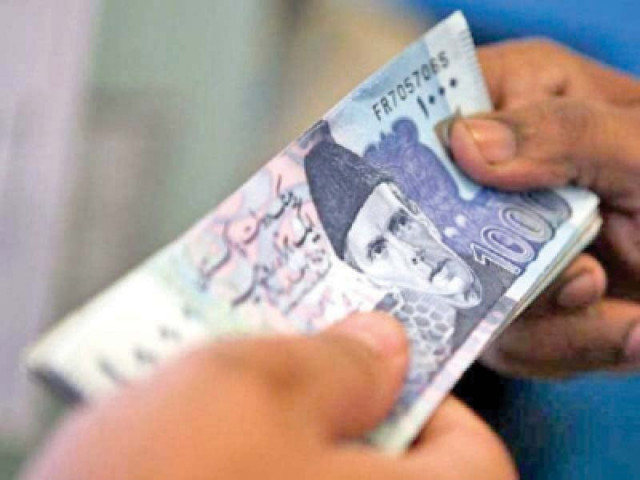Making Pakistan conducive for investment
FDI, remittances, exports not enough to prevent current account deficit from rising to $11.6b

On the global economic front, Pakistan punches well below its weight. It is a youthful country, whose population’s median age is under 23 years, blessed with abundant human and natural resources.
Yet, for years, Pakistan has lagged behind other nations in this region in terms of economic growth.
The country’s real GDP is forecast to expand by 4% in FY22, according to the IMF’s estimate, which is less than the average growth of 5.1% projected for all emerging markets and developing economies.
The country’s weakness can be attributed to numerous factors like terrorism and regional security issues, political uncertainty and macroeconomic instability.
These factors have not only kept many foreign investors at bay but have also prevented local entrepreneurs from launching large-scale capital-intensive projects in several sectors.
On top of this, frequent changes in industrial policies, red tape and the government’s strong-arming of certain industries have hurt investor sentiment.
Events like the Reko Diq case, flip-flopping on the oil refinery policy, dispute with a Turkish rental power company and other independent power producers have raised red flags among domestic and foreign investors.
Due in large part to the weak levels of investment, Pakistan has been suffering from low productivity and has fallen behind other countries in the area of research and development (R&D).
The petroleum sector is a prime example of low growth, which can be attributed largely to the mediocre business climate that has not been sufficient to attract new investors.
When it comes to foreign investors, it can be argued that they might have stayed on the sidelines due to the rapidly changing dynamics in the global energy markets, marked by the emergence of electric vehicles and fuel-efficient internal combustion engines as well as high capital requirements.
On the other hand, the oil industry’s participants have often complained about excessive regulation, low returns and a lack of a supportive policy framework.
The government was reportedly close to finalising a new oil refinery policy that was supposed to usher in a new era of growth and prosperity in this industry. But so far nothing has materialised.
Problems like these have stunted growth in not just oil refining business but other industries as well.
Foreign investment
Similarly, for more than a decade, the foreign direct investment (FDI) has not shown any meaningful improvement.
In the first seven months (Jul-Jan) of current fiscal year, however, we saw an 11.3% increase in FDI to $1.166 billion from $1.084 billion in the corresponding period of last year, as per data of the State Bank of Pakistan (SBP).
However, with FDI dropping by 35% in January, it is unclear whether the healthy momentum can be sustained.
One thing, however, is clear that the inflow of foreign investment, as well as remittances and exports, has not been enough to prevent the current account deficit from rising to $11.58 billion in the first seven months of FY22, including a new monthly record of $2.55 billion for January, as reported by the State Bank.
The deficit for the first seven months is already 3.5% of GDP forecast for FY22, assuming 4% economic growth. This means that the State Bank could miss its target of keeping the current account deficit at 4% of GDP for the full year.
To push economic growth higher and break free from the vicious cycle of low investment and low productivity, policymakers need to take immediate steps.
There are no easy fixes here and structural reforms must be implemented to make the business atmosphere in Pakistan conducive for investment.
The government needs to step back, deregulate industries and take measures that catalyse greater participation of private sector.
Excessive regulation and the large space occupied by state-owned enterprises have prevented fair competition and given birth to inefficient companies in many industries.
However, by reducing the regulatory burden and encouraging fair competition, the government can push out inefficient enterprises from the market and increase industrial productivity.
To get the maximum out of this action, favourable investment incentives must also be offered to accelerate growth.
At the same time, bureaucratic reforms should be introduced to cut down red tape, and regulators should be empowered with greater autonomy.
The state should wholeheartedly adopt an open market economic model. Pakistan suffers from one of the lowest trade-to-GDP ratios in the world at 30%, as identified recently by the Asian Development Bank, which shows that the country remains a closed economy.
For sustainable economic growth and prosperity, the economy must be opened for trade with other regions, besides the US, China and Europe, which have historically been the primary trading partners.
Moreover, sectors like real estate and banking should also be opened to FDI.
Pakistan cannot continue to rely on debt to move its economic engine. The country must take action by introducing structural reforms that encourage investment and put the country on the road to prosperity.
The writer focuses on subjects of business and economics, specialising in the energy sector
Published in The Express Tribune, March 7th, 2022.
Like Business on Facebook, follow @TribuneBiz on Twitter to stay informed and join in the conversation.



















COMMENTS
Comments are moderated and generally will be posted if they are on-topic and not abusive.
For more information, please see our Comments FAQ